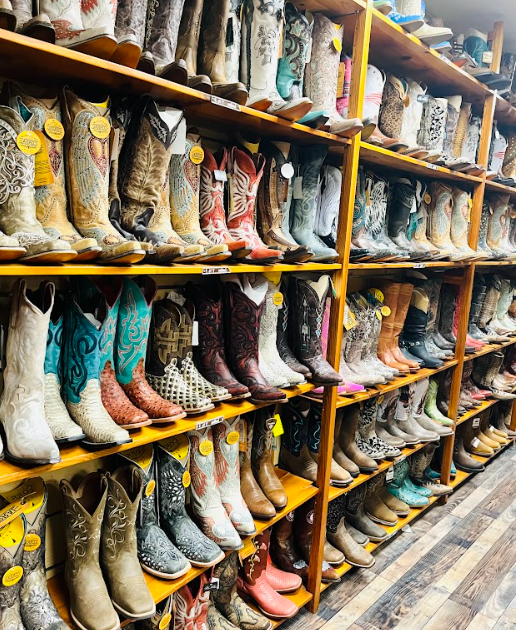How to Have a Good Running Season
Want to Get Better at Running?
Running takes a lot of hard work and focus.
The basics include:
- Train three days a week
- Run or run/walk 20 to 30 minutes, two days a week
- Take a longer run or run/walk (40 minutes to an hour) on the weekend
- Rest or cross-train on your off days
- Run at a conversational pace
- And consider taking regular walk-breaks
If you are thinking about joining the track or cross country program here at Brunswick High, here are a few things to expect. The Zumbachs are the coaches at Brunswick for cross country and track. We have practice everyday—no practice if it’s thundering. Next, we have usually two days where we do a hard workout and three days where the workout is either easy or moderately hard. We have meets every week, sometimes twice a week. Distance people are expected to run two plus events. The events for track include: sprints (50m, 100m, 200m, 400m), middle distance (800m, 1500m), long distance (3000m), and relays (4x100m, 4x400m and 4x400m.) When you join the cross country program you will be running three plus miles for races—sometimes it’s 3.1 or 3.2 miles.
Good running also includes finding a good running shoe. There are five different types of running shoes.
- Lightweight Shoes—If you do a lot of speed work or race, then you will need lightweight trainers. Also known as racing flats, or cross country spikes, these are ideal for speed workouts, like sprints, intervals, fartleks, and competition. Lightweight shoes are built with less foam and cushioning features under the foot, allowing for more natural and dynamic motion for the feet. But there is a downside to the lightweight shoe. In general, these do not offer the same degrees of cushioning and shock absorption as regular road shoes classified in the neutral or stability categories.
- Trail Shoes Trail Runners—have to maneuver across mud, dirt, rocks and other off-road obstacles, therefore, they require the best in support, stability, and protection. And with over 6 million trail runners in the U.S alone, trail shoes sales have surged in the last few years. Trail shoes, as the name implies, are built for trail running. These shoes are designed for running surfaces that are undulating and have a wide range of terrain, from mud to grass, road, and hard packed paths.
- Stability Shoes/Stability Sneakers—are usually recommended for runners with a normal arch or neural feet. These athletes tend to require shoes with a good mix of midsole cushioning and good support. There is nothing wrong with pronation—it’s, in fact, part and parcel of human movement. Pronation, simply put, refers to the inward rolling of the foot upon impact.
- Motion Control Shoes—As previously stated, pronation is part and parcel of the body’s natural movement. But not all runners pronate equally. Some of them do it to excess. That’s why they might need a pair of shoes to help them limit, or even prevent, this. Motion control shoes are usually recommended for runners with low arches and moderate to serious over-pronation, which is the excessive inward rolling of the foot following a foot strike. Motion c5. Cushioned Shoes In general, cushioned shoes are made with extra cushioning for a plush feel, but without a lot of corrective or supportive elements. Most cushioned shoes are built with shock dispersion features in the outsole and/or midsole portion of the footwear, typically in the heel or forefoot regions. Cushioned shoes are typically recommended for runners with little to no pronation as they offer both shock absorption and protection with little to no extra support throughout the gait cycle. These shoes are also called “neutral padded shoes”. These are designed to counteract supination. Typically, cushioned shoes are recommended for runners with high arches—what’s known as supinator, or underpronators in the running circles. Control shoes are usually more rigid than the average sneaker and are built with a wide sole to limit excessive motion throughout the gait cycle. These are also ideal for heavy individuals looking for shoes that provide high stability and durability.
When you are running, you don’t just want to do the same thing everyday.
Mix up your runs. Once you can run for about 30 minutes straight, you can start adding intervals which will help you improve your overall pace by switching up the stimulus on your body to your routine, says Brough. Plus, “switching up workouts is a great way to keep the fun rolling,” says Roche. Two ways to try intervals—hill strides: run uphill for 20 to 30 seconds, then jog downhill or on flat road until recovered or speed intervals: Alternate between one minute at about 75-percent effort and one minute of easy jogging. Sprint intervals: Alternate between one minute of all-out sprinting and five minutes of easy jogging. You can also use checkpoints (like mailboxes, trees, or houses) as interval endpoints to keep outdoor runs interesting.
Happy running—one step at a time!
Your donation will support the student journalists of Brunswick High School. Your contribution will allow us to purchase equipment and cover our annual website hosting costs.























































Reilly Teague • Jan 30, 2023 at 3:56 pm
I like how you provide many options for a good running shoe. I think it is important to find the perfect shoe that works for you.